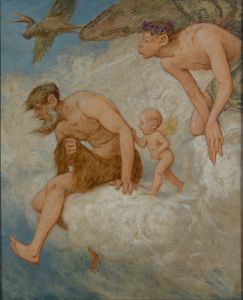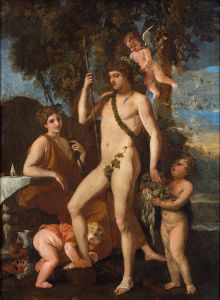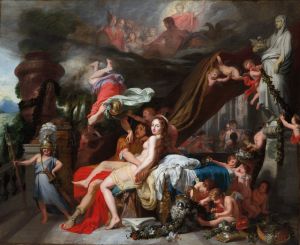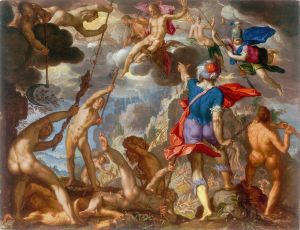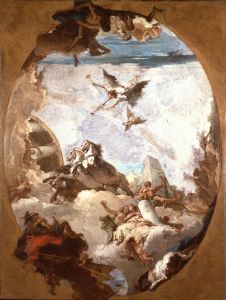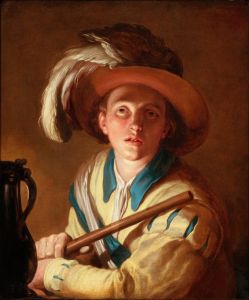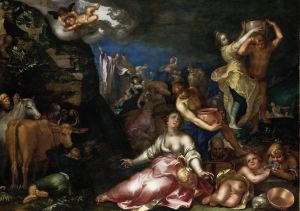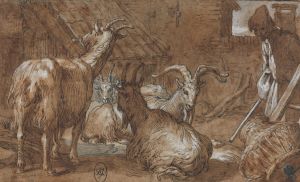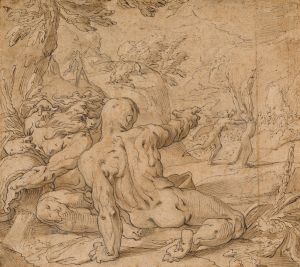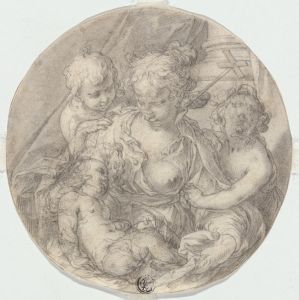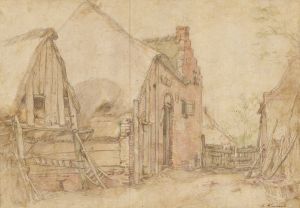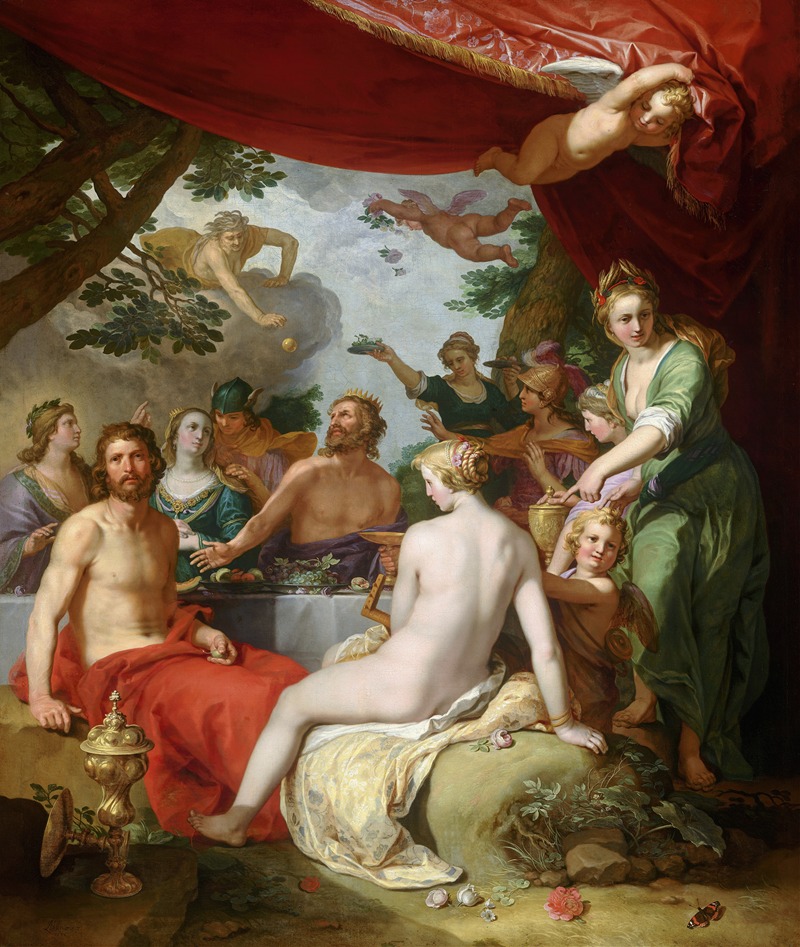
The Feast of The Gods At The Wedding of Peleus and Thetis
A hand-painted replica of Abraham Bloemaert’s masterpiece The Feast of The Gods At The Wedding of Peleus and Thetis, meticulously crafted by professional artists to capture the true essence of the original. Each piece is created with museum-quality canvas and rare mineral pigments, carefully painted by experienced artists with delicate brushstrokes and rich, layered colors to perfectly recreate the texture of the original artwork. Unlike machine-printed reproductions, this hand-painted version brings the painting to life, infused with the artist’s emotions and skill in every stroke. Whether for personal collection or home decoration, it instantly elevates the artistic atmosphere of any space.
Abraham Bloemaert, a prominent Dutch painter and printmaker of the late 16th and early 17th centuries, is known for his contributions to the Mannerist and Baroque movements. One of his notable works is "The Feast of The Gods At The Wedding of Peleus and Thetis." This painting, created around 1638, depicts a mythological scene from ancient Greek mythology, specifically the wedding feast of Peleus and Thetis, the parents of Achilles.
The painting illustrates the grand banquet attended by various gods and goddesses, celebrating the union of the mortal Peleus and the sea nymph Thetis. According to myth, this wedding was a significant event as it led to the birth of Achilles, one of the greatest heroes of Greek mythology. The scene is rich with classical references and showcases Bloemaert's skill in rendering complex compositions and dynamic figures.
In "The Feast of The Gods At The Wedding of Peleus and Thetis," Bloemaert employs a vibrant palette and intricate detailing to bring the mythological narrative to life. The gods and goddesses are depicted in various poses, engaging in conversation, music, and revelry. The artist's use of light and shadow adds depth and drama to the scene, highlighting the divine nature of the characters.
Bloemaert's work is characterized by its meticulous attention to detail and the harmonious arrangement of figures within the composition. The painting reflects the influence of Italian Renaissance art, which Bloemaert encountered during his travels in Italy. This influence is evident in the balanced composition, the idealized forms of the figures, and the use of classical architectural elements as a backdrop.
The painting also demonstrates Bloemaert's mastery of anatomy and his ability to convey movement and emotion through the poses and expressions of the figures. Each character is carefully rendered, with particular attention given to their individual attributes and symbols. For example, Zeus, the king of the gods, is depicted with his characteristic thunderbolt, while other deities are shown with their respective attributes, such as Apollo with his lyre and Athena with her helmet and spear.
"The Feast of The Gods At The Wedding of Peleus and Thetis" is a testament to Bloemaert's skill as a painter and his deep understanding of classical mythology. The painting not only serves as a visual representation of a significant mythological event but also as an example of the artistic trends and techniques of the Dutch Golden Age.
Today, Abraham Bloemaert is remembered as one of the leading figures of Dutch art in the early 17th century. His works, including "The Feast of The Gods At The Wedding of Peleus and Thetis," continue to be studied and admired for their technical excellence and their ability to convey complex narratives through visual art.





